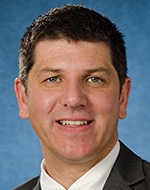Page Content
The community school: A beloved public place
 When I grew up in Pincher Creek, Alberta, I attended Matthew Halton Community School, a beloved place that was indeed open to both students and the community at large. As the Alberta Teachers’ Association (ATA) defines a community school, it is a place where “first priority is given to the basic education function for children and youth; a community centre where citizens of all ages may take part in a multiplicity of activities; where appropriate, a centre for delivery and co-ordination of social services for the community; and where possible, a focus of community life and community improvement.”
When I grew up in Pincher Creek, Alberta, I attended Matthew Halton Community School, a beloved place that was indeed open to both students and the community at large. As the Alberta Teachers’ Association (ATA) defines a community school, it is a place where “first priority is given to the basic education function for children and youth; a community centre where citizens of all ages may take part in a multiplicity of activities; where appropriate, a centre for delivery and co-ordination of social services for the community; and where possible, a focus of community life and community improvement.”
Matthew Halton Community School occupies just such a place in my memories.
This concept of a school as a hub of community shaped my own understanding of the vital nature of a school as a vibrant public place that’s recognized and valued within a community — valued as a gathering place for learning and youth activity, but also as a place empowered by community-building.
According to the ATA, a community school must have three basic components: the school and the school staff must have a high level of credibility in the eyes of the community; there must be a high degree of community homogeneity
or agreement in terms of desired goals and the means to reach those goals; and a close fit must exist between the local community and provincial or national interests and needs. With these three conditions met, there is great possibility for schools to flourish as hubs of community.
In a small, rural community like Pincher Creek this was especially important, as resources were limited and many community needs were met, where possible, through joint community and school partnerships. The community was always clear that adequate provisioning of staff and resources was a first condition of this collaborative place-making. Adequate resourcing has always been critical in the community school models of Alberta, as they cannot be used as a panacea for an underfunded education system or as a cure-all for either community defects or the deficiencies of local and provincial governments.
The articles framed within this edition of The Learning Team locate schools as hubs of community and bring them to life for our collective understanding. These articles paint a rich tapestry of the interweaving between schools, students, teachers, elders and diverse community members, and provide insight into the complex nature of meaning and the definition of a community — not just the citizenry located in a geographic space, but rather a group with shared interests, concerns and values.
I hope you enjoy this edition of The Learning Team and that it may, in some small way, contribute to the co-creation of stronger community and school partnerships.
Phil McRae is an executive staff officer with the Alberta Teachers’ Association.
